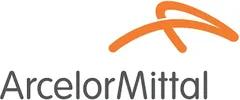

Other manufacturers with similar products
EPD: Steel fibers for concrete reinforcement, TABIX (ArcelorMittal)
Undulated Fibre trade named TABIX has been designed such from the point of view of amplitude and wave length that the workability is good for aspect ratios up to 45 and remains satisfactory for aspect ratios up to 60. Due to the shape TABIX provides shrinkage control and pull-out resistance from the concrete matrix. These features make TABIX especially suited for jointless industrial floors and for structural applications. TABIX needs a well compacted medium - to high - strength concrete to develop its full performance. Hooked-End Fibre (HE) does not perform as well as undulated fibres with regard to shrinkage control, but shows better performances for high deformations of the concrete element, and it provides a good workability when using fibres with up to an aspect ratio of 60. HE can be used with any concrete mix and high concrete density is less mandatory then for undulated or for flat-end fibres. Flat-End Fibre (FE) is a straight fibre with flattened ends. It is sometimes referred to as fishtail. Through the flattening process, the ends become larger which significantly increases the anchorage of the fibre in the concrete matrix rather than relying solely on the friction between concrete and steel. FE is almost exclusively used in shotcrete applications due to its low rebound ratio. This fibre can however also be used in other applications such as precast elements. Flat-End fibre should not be used in applications where concrete shrinkage is a primary concern. Hooked/Flat-End Fibre (HFE) is a combination of the HE (hooked end) and the FE (flat end) shapes. By flattening the extremities of the crimped fibres, the anchorage capacities are still improved especially for small strains. HFE can be used in any type of application. HFE shows static performance and shrinkage control in fresh and in hardened concrete. As with HE, all concrete grades can be used with HFE.



